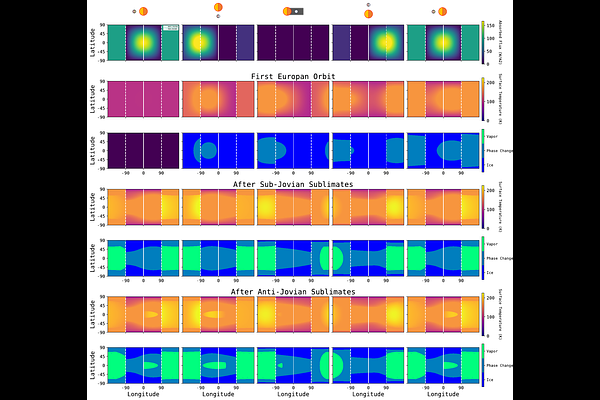Life after death: Europa in the evolving Habitable Zone of a Red Sun

Life after death: Europa in the evolving Habitable Zone of a Red Sun
Elijah Mullens, Britney Schmidt, Lisa Kaltenegger, Nikole K. Lewis
AbstractMost stars end their main-sequence (MS) lives by evolving through the red-giant and asymptotic-giant branches before ending as a quiescent, stable white dwarf. Therefore, it is imperative to model the post-MS as it relates to long-term stability of environments potentially suitable for life. Recent work has shown that gas giants can exist in the habitable zone (HZ) during the red giant phase and around a white dwarf remnant. Icy moons represent large reservoirs of water and will evolve through sublimation and melting when exposed to higher instellation, where the relatively lower surface gravity could lead to the rapid loss of all surface water. We model the surface evolution of Europa when initially exposed to habitable zone instellation in the red giant branch. Modeling the diurnal and yearly flux variations on a 2D map we show that, due to Jupiter's increased albedo, the sub-Jovian hemisphere of Europa largely sublimates while only the anti-Jovian equatorial band sublimates. With the increasing instellation of the red giant branch, both hemispheres sublimate substantially. We then model the evolution of a tenuous water-vapor atmosphere and show it is stable against atmospheric loss for at least 0.2 Gyr in the red giant branch habitable zone. We then present three ways to observe a sublimating Europan-like exomoon and potential spectra. Extending the results of this work to different planets and moons could open up a new pathway by which life could persist beyond the death of a star.